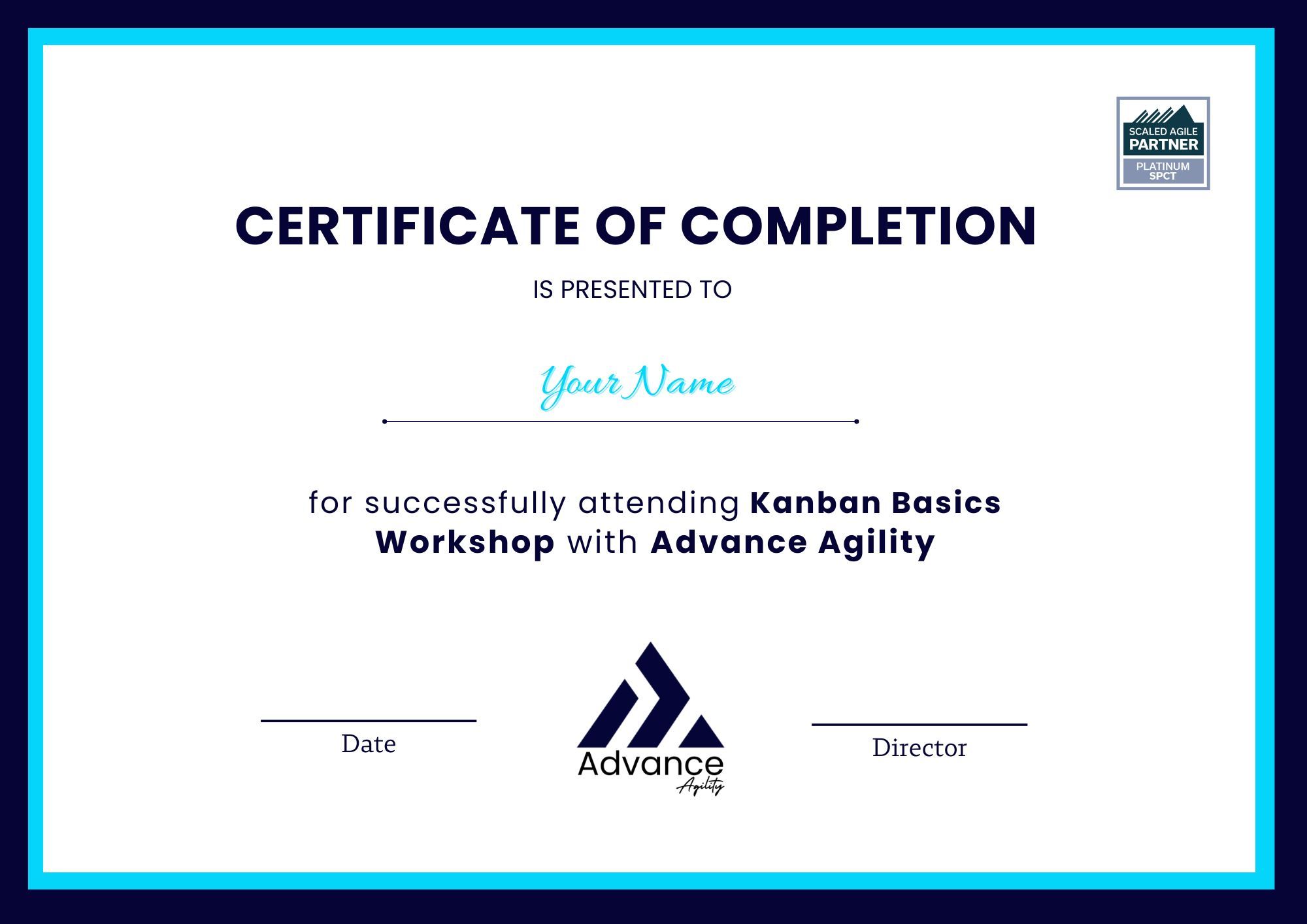Register today and get 10% off on all courses
Coupon Code: DIS10*
Register today and get 10% off on all courses
Coupon Code: DIS10*

Date
09 Dec
Time
4:00 AM - 8:00 AM (EST)
4.9/5
4.9/5
Upcoming Events
+
+
+
The Kanban Basics course provides a comprehensive understanding of the Kanban methodology, a Lean workflow management system. Covering key Kanban fundamentals, participants learn to visualize workflow, set work-in-progress limits, and manage flow with Kanban Boards. This course equips individuals to efficiently apply the Kanban Method for effective service, product, and project support in complex environments.
The history of Agile, originating in the early 2000s, saw the creation of the Agile Manifesto, emphasizing collaborative and iterative approaches in software development. Influential methodologies like Scrum, Extreme Programming, and Kanban emerged, with Kanban being a well-liked framework for implementing agile and DevOps, emphasizing transparency and real-time capacity communication. This Agile movement has since transcended software development, impacting diverse industries with its customer-centric and adaptable principles.
Origin of Agile
Agile Manifesto and Principles
Kanban Definition
Kanban Vs. Kanban System
History of Kanban
Setting up a Kanban system involves utilizing a visual Kanban board, embodying Lean workflow management principles. With columns and cards, the process includes customization, work-in-progress limits—a fundamental Kanban principle, and may integrate feedback loops for continuous improvement within workflow management systems. This comprehensive approach aligns with Kanban Basics and the Kanban Method for optimal operational efficiency.
Toyota’s Six Rules
Push vs. Pull
Kanban Principles
Kanban principles, rooted in the Kanban Method and Lean workflow management, stress visualizing work on a board, limiting work-in-progress for focus, and optimizing flow within a dynamic workflow management system. The core basic principle of Kanban underscores the need to thoroughly understand processes for effective improvement, aligning with Kanban Basics and a customer-centric approach.
Visualization the flow of work
Limit Work in Progress
Manage Flow
Explicit Policies
Feedback Loops and Continuous Improvement
In Kanban and Agile methodologies, the Cumulative Flow Diagram (CFD) is a sophisticated analytics chart that, along with essential metrics like Lead Time, illuminate workflow dynamics. Rooted in the Kanban Method and Lean workflow management, these tools provide valuable insights for continuous improvement in a dynamic workflow management system.
Cumulative Flow Diagram
Lead Time, Process Time, Activity Ratio, %C&A
Kanban and Scrum Difference and Similarities

Learning to lead Agile transformation in Our Teamenterprises & Get Certified
We encompass a comprehensive range of expertise, providing 360 guidance in established frameworks to our clients.
Rather than viewing ourselves merely as a vendor or provider, we see ourselves as dedicated partners in success, actively paving the way for our clients' future achievements.
Get professional guidance from
learning
advisors

Upskill and reskill your team with our corporate training programs.
Reach Us
09 Dec
We’re Agile, so we don’t need to estimate” Wrong!
Start
from
$500

09 Dec
We’re Agile, so we don’t need to estimate” Wrong!
1 Enrolled
Start
from
$500